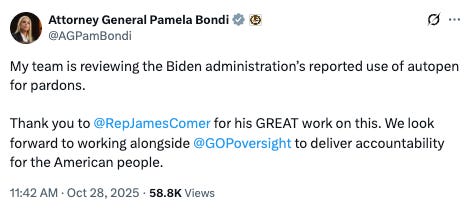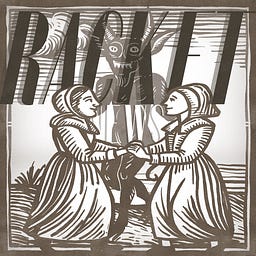Timeline: The Autopen Debate
Description
The House Oversight Committee’s report, “The Biden Autopen Presidency,” can be broken down into two basic parts:
Biden’s inner circle — or “politburo,” as the report characterizes it — worked like the two guys in Weekend at Bernie’s, constantly propping up the president to hide his declining cognitive condition from the public.
As a result, Biden was often not in charge, thus the need for the administration to use the autopen multiple times.
The report reaches a conclusion that reads like a judicial ruling: Absent evidence that Biden made executive decisions, “the Committee deems those actions taken through use of the autopen as void.” The report continues:
Barring evidence of executive actions taken during the Biden presidency showing that President Biden indeed took a particular executive action, the Committee deems those actions taken through use of the autopen as void. The validity of the executive actions allegedly approved and signed (largely by autopen) by President Biden must be reviewed to determine whether legal action is necessary to ameliorate consequences of any illegitimate pardons granted, or executive actions implemented, throughout the Biden Autopen Presidency. The Committee finds numerous executive actions—particularly clemency actions—taken during the Biden Administration were illegitimate.
Attorney General Pam Bondi responded the morning the report was released, saying her team was reviewing Biden’s use of the autopen for pardons.

The Oversight Committee’s report focuses on “executive actions,” particularly Biden’s last-minute pre-emptive pardons of family members and characters such as Anthony Fauci.
A federal appeals court said in a 2024 ruling that a pardon or commutation doesn’t require a president’s signature as long as it can be demonstrated that the president made the decision. The Oversight Committee’s report tries to make the case that proof of Biden’s executive actions is missing.
The Biden White House’s executive decision-making procedures were so lax that the chain of custody for a given decision is difficult or impossible to establish. Documents that were used to predicate executive actions should be sufficiently traceable to ensure they reflect the will of the president. Instead, the Biden White House’s flimsy procedure appears to have been extremely vulnerable to abuse.
Interestingly, the committee’s report does not address legislation that was signed by autopen, even though the U.S. Constitution says presidents “shall” sign bills they approve. Still, courts have not ruled whether it’s legal to sign legislation with an autopen. In 2011, President Obama became the first president to “sign” legislation by autopen. The administration relied on a 2005 Justice Department opinion for its legal justification.
You can read more about that opinion below as part of Racket News’ timeline of events, controversies and key documents concerning the autopen.
March 27, 1929
Acting Solicitor General Alfred Wheat writes a memorandum that says presidential pardons do not require an “autograph,” but that “custom and propriety require that the pardoned man be given some token to show that he has been pardoned.”
July 7, 2005
The Justice Department’s Office of Legal Counsel issue an opinion that concludes:
The President need not personally perform the physical act of affixing his signature to a bill he approves and decides to sign in order for the bill to become law. Rather, the President may sign a bill within the meaning of Article I, Section 7 by directing a subordinate to affix the President’s signature to such a bill, for example by autopen.”
Although the Justice Department researched the topic at the request of the White House, President Bush never signed legislation with the autopen.
May 26, 2011
President Obama becomes the first president to sign legislation with the autopen. The president was in Deauville, France, for the G8 Summit while Congress voted to extend provisions in the Patriot Act. They would have expired without his immediate signature.
May 27, 2011
Georgia Congressman Tom Graves expresses concerns about the autopen in a letter to Obama. Graves notes the U.S. Constitution says the president “shall” sign legislation he approves, and seeks clarity that Obama was fully informed of what he had the autopen sign.
Mr. President, I write to request your confirmation that S. 990, as passed by Congress, was presented to you prior to the autopen signing, as well as a detailed, written explanation of your Constitutional authority to assign a surrogate the responsibility of signing bills passed by Congress into law.






